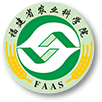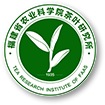Abstract:
The history, status, and prospect of the famed Longyan tea products and industry were reviewed. This article covers production, product varieties, integration with tourism, cultural activities, and developmental plans associated with the enterprise pivotal to livelihood of the residents. By analyzing the past and present status as well as identifying challenges the industry may face in the future, such as the ever-increasing production costs, weakened leadership role played by major players, declined earning, and ineffective coordination among business associates, measures are suggested to help usher in more prosperous years ahead. For instance, to secure a sustainable business, prioritizing an eco-friendly, market-oriented, tech-innovative, diverse, and adaptable operation was deemed essential, and thus, proposed for the area companies as well as the governing agencies. For the green economy, building parks or tea gardens utilizing digital technologies was encouraged. In corporate management, keen efforts at the top level on brand building, sales promotion, and community involvement are crucial to foster business advancement. On manufacturing facility and technology, it is imperative to continually upgrade and make them more efficient to warrant consumer acceptability, premium market value, and adequate profit margin on the products. To achieve that, corporate R&D and cooperated academic research as well as sufficient capital investment would be indispensable. Meanwhile, by integrating plantation operation with the models like “tea+culture”, “tea+health”, “tea+tourism”, “tea tourism+homestay” or “tea tourism+study tour,” a broadened consumer base could be realized to help expand the market reach. Finally, by faithfully following the stipulated key factors in plan execution, the present operation could smoothly and successfully evolve into a new quality industry that brings prosperity and well-being of all involved in the years to come.




 下载:
下载: